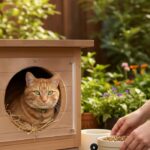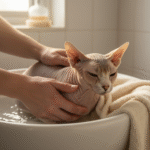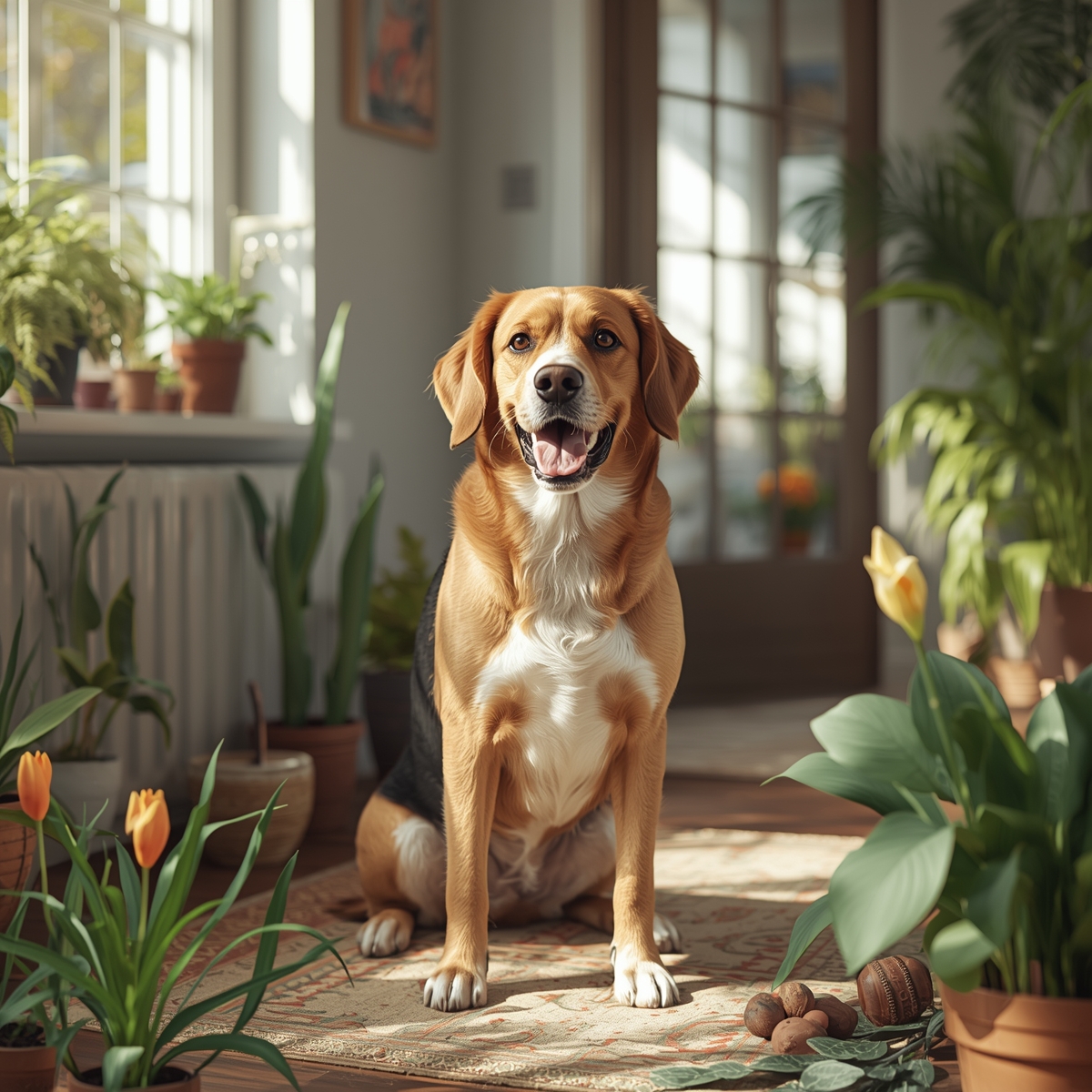Protect your dog by learning about the most common plants unsafe for dogs. This guide details the severe risks of lilies, Sago palm, azaleas, and common houseplants like pathos and aloe vera, offering essential safety and emergency response tips.
As loving dog owners, we strive to create a safe and nurturing environment for our canine companions. We secure the fence, buy the best food, and ensure they get ample exercise. Yet, a hidden danger often lurks in plain sight, both inside our homes and throughout our gardens: beautiful, yet toxic, flora. Many common houseplants and garden plants are, in fact, highly toxic to dogs if ingested, posing serious, sometimes life-threatening, risks. Understanding which plants fall into this category—the plants unsafe for dogs—is not just a good idea; it’s a critical component of responsible pet ownership.
This detailed guide will meticulously explore the specific botanical threats, explain the science behind their toxicity, and provide actionable steps to safeguard your beloved pet. Our goal is to equip you with the knowledge to easily identify and manage these risks, ensuring your home and yard remain a haven, free from the hazards of poisonous plants.
The Grave Risks: Deadly Garden and Houseplants
The spectrum of toxicity among common flora is wide, ranging from mild gastrointestinal distress to fatal organ failure. It is essential to recognize the most dangerous plants unsafe for dogs that you might encounter.
The Floral Killers: Lilies, Azaleas, Oleander, and Foxglove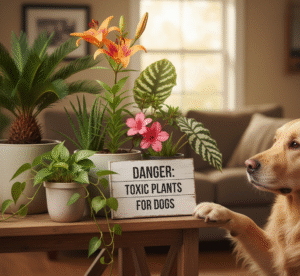
When discussing severely poisonous flora, four names consistently top the list for causing acute, systemic poisoning:
• Lilies (True Lilies and Daylilies): While many people adore the elegance of lilies, certain species are catastrophic for dogs. True lilies (Lilium species) and daylilies (Hemerocallis species) are perhaps most famous for their extreme toxicity to cats, but they are also considered highly dangerous plants unsafe for dogs. Ingestion can cause severe kidney failure and gastrointestinal upset. It is best practice to keep all lily types completely out of any pet-accessible area.
• Azaleas and Rhododendrons: Belonging to the Rhododendron genus, Azaleas are stunning additions to any landscape. However, they contain grayanotoxanes. Even consuming a small amount of the leaves, flowers, or nectar can lead to serious cardiovascular problems, including abnormal heart rate, severe vomiting, diarrhea, tremors, and even coma or death.
• Oleander: A popular, drought-tolerant shrub in warmer climates, Oleander (Nerium oleander) is beautiful but contains cardiac glycosides. This makes it one of the most deadly plants unsafe for dogs and other animals. Ingestion of any part of the plant—leaves, stems, flowers, or even dried cuttings—can cause severe gastrointestinal irritation, abnormal heart function (tachycardia and arrhythmia), and potentially fatality.
• Foxglove: The stunning, tubular flowers of Foxglove (Digitalis purpurea) contain chemicals used in human heart medicine, but they are highly toxic in their raw form. Like Oleander, they contain cardiac glycosides that can rapidly cause severe cardiac arrhythmia, heart failure, and death if ingested by a dog.
The Hidden Danger of Sago Palm: Extreme Toxicity
Among all the common household and garden threats, the Sago Palm (Cycas revoluta) holds a particularly infamous position. It is perhaps the single most dangerous ornamental plant commonly found in homes and gardens.
Why Sago Palm is Exceptionally Unsafe for Dogs
Every single part of the Sago Palm—the fronds, the roots, the trunk, and especially the seeds (or “nuts”)—is highly toxic. The plant contains a potent toxin called cycasin, which primarily attacks the liver.
• Liver Failure Risk: Ingestion, often occurring when curious dogs chew on the attractive, brightly colored seeds, can quickly lead to acute liver failure. The symptoms often begin with vomiting, bloody diarrhea, depression, and excessive thirst. If not treated immediately and aggressively, the damage to the liver can be irreversible and fatal.
High Mortality Rate: The mortality rate associated with Sago Palm ingestion is frighteningly high, estimated to be up to 50% even with veterinary intervention. This plant is a non-negotiable hazard and should be removed from any property where a dog resides. The seriousness of this plant cannot be overstated when discussing plants unsafe for dogs.
Common Houseplants That Are Plants Unsafe for Dogs
It’s not just the garden that harbors dangers. Many beloved indoor foliage plants, chosen for their aesthetic appeal and air-purifying qualities, are actually toxic to our pets.
Irritants and GI Upset: Aloe Vera, Philodendron, and Pothos
Several common houseplants contain compounds that, while not typically fatal, can cause significant discomfort and require immediate attention:
• Aloe Vera: This popular succulent, lauded for its skin-soothing properties, contains a component called saponins. If a dog chews on the leaves, the ingestion of the latex (the yellow layer just under the skin) can cause vomiting, diarrhea, lethargy, and tremors. While rarely fatal, it is a definitive member of the list of plants unsafe for dogs for indoor settings.
• Philodendron and Pathos (Devil’s Ivy): These are two of the most popular and easiest-to-care-for houseplants globally. Unfortunately, they belong to the Araneae family and contain insoluble calcium oxalate crystals. When a dog chews these leaves, the crystals pierce the soft tissues of the mouth, throat, and gastrointestinal tract.
• Immediate Pain and Irritation: This causes intense, immediate pain, oral irritation, burning of the mouth, excessive drooling, difficulty swallowing, and vomiting. The symptoms are often so painful that the dog stops eating or chewing, which fortunately limits the amount of toxin ingested, but the distress is significant.
The Oral Menace: Dieffenbachia (Dumb Cane)
Dieffenbachia is another beautiful, large-leafed tropical houseplant containing those same irritating calcium oxalate crystals, but often in a higher concentration or more potent form.
• Swelling and Drooling: Ingestion of Dieffenbachia (often called “Dumb Cane”) can cause rapid and intense swelling of the mouth, tongue, and throat. This severe oral swelling and drooling can, in extreme cases, lead to difficulty breathing due to airway obstruction. It is truly one of the more distressing plants unsafe for dogs to witness your pet consume.
Toxic Bulbs and Fatal Garden Threats
The risks are not limited to the leaves and stems; some of the most dangerous toxins are concentrated in the bulbs and seeds of familiar garden plants.
The Underground Threat: Tulips and Daffodils
Spring flowers are a beautiful sign of renewal, but the bulbs that produce them are potent toxins:
• Tulips and Daffodils: These iconic spring bloomers contain toxins (tulipanin in tulips; lycorine in daffodils) that are heavily concentrated in the underground bulbs. Dogs, especially those who like to dig, can unearth and chew these bulbs, leading to severe vomiting, diarrhea, abdominal pain, and sometimes even dangerous cardiac and respiratory symptoms. Owners must be vigilant about dogs digging in newly planted areas.
The Highly Poisonous Castor Bean Plant
The Castor Bean plant (Ricinus communis) is sometimes grown as an ornamental due to its large, attractive leaves and striking seed pods. This plant is among the most poisonous substances in the world.
• Ricin Toxin: The seeds of the Castor Bean contain ricin, an incredibly potent toxic protein. Ingestion of just a small number of seeds, even after they have been chewed, can cause severe, hemorrhagic gastroenteritis, kidney damage, tremors, seizures, coma, and ultimately, death. This plant is categorically a top-tier danger among all plants unsafe for dogs and must be strictly avoided.
Proactive Safety Measures: Keeping Plants Unsafe for Dogs Out of Reach
Understanding the threats is only the first step. Responsible pet ownership demands proactive measures to prevent exposure.
Strategic Placement and Pet-Proofing
The best defense is avoidance. Adopt a rigorous strategy of separation:
• Elevate Indoor Plants: Move all toxic houseplants to high shelves, hanging baskets, or rooms that are consistently inaccessible to your dog. Remember that determined dogs can jump or climb.
• Outdoor Barriers: For toxic garden plants, consider installing decorative fencing, using raised beds that are difficult to access, or, ideally, removing the most severely toxic species (like Sago Palm and Oleander) entirely.
• Supervised Digging: If your dog is a dedicated digger, supervise them closely in the garden, particularly during planting seasons when tempting bulbs are going into the ground.
Plant Identification and Removal
Take an inventory of your home and yard. If you cannot definitively identify a plant, treat it as a potential hazard until you can confirm it is safe. If you have any of the highly toxic plants unsafe for dogs like Sago Palm or Castor Bean, the safest course of action is immediate and careful removal.
H3: Emergency Action Plan: When Your Dog Eats a Toxic Plant
Accidents happen, and quick, decisive action is critical in minimizing the harm caused by toxic plant ingestion. Every dog owner needs a clear, rehearsed emergency plan.
Immediate Contact: Veterinarian and Poison Control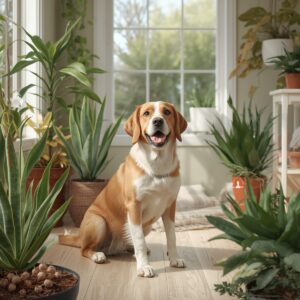
If you suspect, or witness, your dog ingesting any of the plants unsafe for dogs, do not wait for symptoms to appear. Time is of the essence.
1. Secure the Dog and the Plant: Immediately remove any remaining plant material from your dog’s mouth and secure them.
2. Collect a Sample: If possible, collect a sample of the ingested plant (leaf, seed, or flower). A proper identification will dramatically speed up the vet’s treatment plan.
3. Call for Expert Help:
• Contact Your Veterinarian: Call your vet or the nearest animal emergency hospital immediately. Inform them of the situation, the plant ingested, and your dog’s size and current condition.
Do NOT Induce Vomiting Unless Directed: Never attempt to induce vomiting or give any home remedies without explicit instruction from a veterinarian or poison control expert. In some cases, vomiting can be more damaging, especially if the plant contains sharp crystals or corrosive substances.
Conclusion
Protecting our dogs requires constant vigilance, and understanding the category of plants unsafe for dogs is a non-negotiable part of that responsibility. From the deadly cardiac glycosides in Oleander and Foxglove to the liver-destroying cycasin in Sago Palm, the threats are real and varied. By conducting a thorough sweep of your home and garden, adopting a policy of strategic plant placement, and having a well-rehearsed emergency response plan, you actively safeguard your beloved canine companion. Keep toxic plants out of reach of curious pets, and you can ensure that your shared environment remains a place of joy, safety, and unwavering health for years to come.
FAQ Section: Understanding Plants Unsafe for Dogs
To solidify this comprehensive guide, we address common questions concerning the dangers posed by poisonous flora.
Q1: What is the most common toxic houseplant I need to worry about?
The most commonly encountered and concerning toxic houseplants are those containing insoluble calcium oxalate crystals, such as Philodendron, Pathos, and Dieffenbachia (Dumb Cane). While the symptoms (oral irritation, drooling, swelling) are distressing, they are typically not fatal. However, the most dangerous common houseplant is the Sago Palm, which can cause fatal liver failure.
Q2: How much of a toxic plant does my dog need to eat to get sick?
The amount varies drastically depending on the plant and the dog’s size. For highly toxic plants unsafe for dogs, like Oleander, Foxglove, or Castor Bean, even a small piece of a leaf or a single seed can be enough to cause severe, potentially fatal, poisoning. For plants like the Sago Palm, a few seeds or a small section of the trunk can be catastrophic.
Q3: Are all lilies dangerous to dogs?
Yes and no. True Lilies (Lilium species) and Daylilies (Hemerocallis species) are severely toxic and can cause kidney failure. However, the Peace Lily (Spathiphyllum) and Calla Lily (Zantedeschia) contain the irritating calcium oxalate crystals (like Pothos) and usually cause oral irritation, not systemic organ failure. Given the confusion, it is safest to assume any plant labeled “lily” should be classified as a plant unsafe for dogs and kept away.
Q4: If my dog just licks a toxic plant, will that make them sick?
In most cases, mere licking or momentary contact is not enough to cause serious poisoning. Most toxins must be ingested (chewed and swallowed) to enter the dog’s system and cause systemic toxicity. However, licking a plant like Dieffenbachia or Pothos can cause immediate, painful irritation due to the calcium oxalate crystals on the surface, leading to excessive drooling and pawing at the mouth.
Q5: I have an outdoor plant I suspect is toxic. What is the safest way to dispose of it?
If you identify a highly toxic plant, like Sago Palm, Oleander, or Castor Bean, the safest method is to carefully cut it down and ensure all parts, including the roots and fallen seeds, are removed. Place the material in sealed bags labeled “Toxic Plant Material” before discarding according to your local waste management guidelines. Never compost a highly toxic plant, as dogs or wildlife might still access the material.





